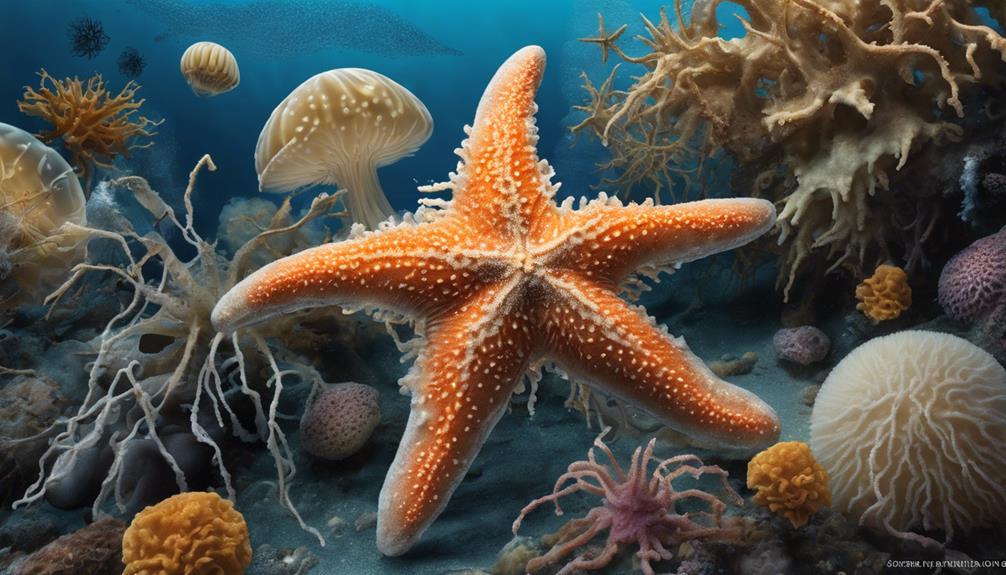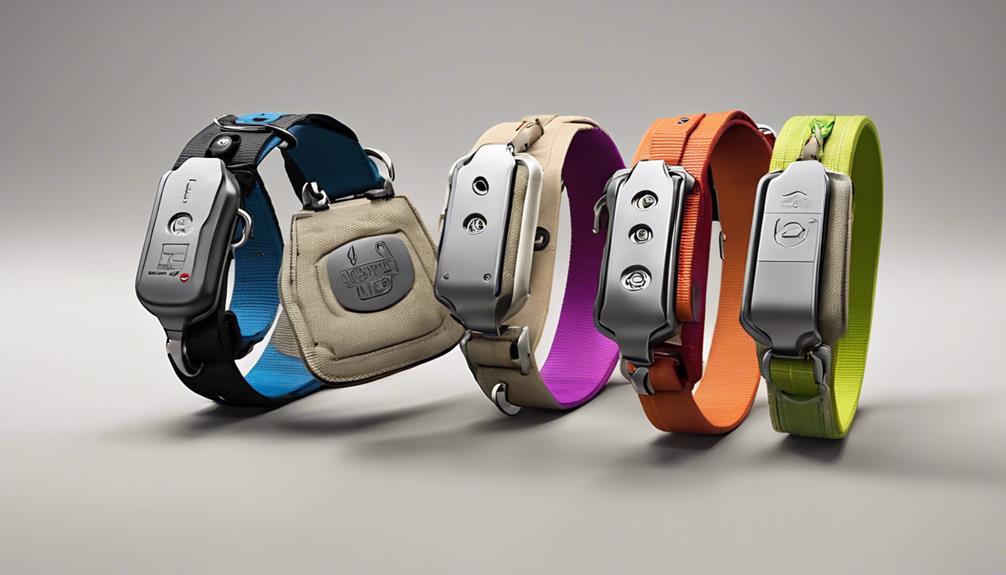Yes, dogs can safely have salmon. Salmon provides omega-3 for their immune system, healthy fats for a shiny coat, and digestible protein. However, it is important to avoid overeating to prevent upset stomachs and to cook the salmon thoroughly to reduce the risk of salmon poisoning or mercury contamination. Make sure to use proper cooking techniques and portion control, and consult with a veterinarian before feeding. It is important to remember that moderation is key. Understanding safe cooking methods, alternatives, and portion sizes is crucial for maintaining your dog’s health. There is more to learn about feeding salmon to your dogs. Prioritize safety and well-being when adding salmon to their diet.
Key Takeaways
- Cook salmon thoroughly to eliminate harmful bacteria and reduce risks.
- Consult a vet before introducing salmon to ensure safety for your dog.
- Watch for bones and avoid toxic seasonings when preparing salmon for dogs.
- Moderation is crucial to prevent overeating and digestive issues.
- Opt for wild-caught salmon and follow safe cooking methods to benefit from its nutrients.
Benefits of Salmon for Dogs
When feeding your dog salmon, they can benefit from the omega-3 fatty acids that support their immune system and manage skin allergies. Salmon isn't only delicious but also packed with healthy fats that are good for dogs. These fats help maintain a shiny and healthy coat for your furry friend.
Additionally, the rich protein source in salmon is easily digestible, making it a great choice for dogs with sensitive stomachs. The omega-3 fatty acids found in salmon play an important role in reducing inflammation in dogs, promoting overall well-being. Furthermore, incorporating salmon into your dog's diet may even improve cognitive function, especially in older dogs.
Compared to other fish like tuna, salmon is low in mercury, ensuring that your dog receives essential nutrients without the risk of heavy metal poisoning. Overall, adding salmon to your dog's meals can have numerous benefits for their health and vitality.
Risks of Feeding Dogs Salmon

Eating too much salmon can upset your dog's stomach, leading to vomiting and diarrhea.
Dogs can develop salmon poisoning disease from consuming raw or undercooked salmon, which can be life-threatening if not treated promptly.
Remember to monitor your dog for any signs of illness after feeding them salmon and seek veterinary advice if needed.
Salmon Poisoning Risk
Exposure to salmon can pose a risk of salmon poisoning in dogs, potentially leading to various symptoms and complications. Salmon poisoning disease is caused by a parasite called Neorickettsia helminthoeca found in raw fish, which is toxic to dogs.
Symptoms include lack of appetite, vomiting, lethargy, weakness, fever, and diarrhea. While it's a rare condition, prompt treatment is essential for recovery. If your dog exhibits signs of illness after consuming salmon, consult a vet to rule out salmon poisoning.
This disease is mainly seen in certain regions of the US and Canada. To minimize the risk, make sure proper handling, cooking, and portion control when feeding salmon to your furry friend.
Mercury Contamination Concerns
With proper portion control and consideration of individual health factors, feeding dogs salmon can be a safe and nutritious addition to their diet. When it comes to mercury contamination concerns, there are specific factors to keep in mind:
- Salmon contains low levels of mercury, making it a safe option for dogs in moderation.
- Mercury contamination is more prevalent in larger, older fish rather than smaller, younger ones.
- Dogs are less vulnerable to mercury toxicity due to their lower body weight and different metabolism than humans.
- Ensuring proper portion control and feeding frequency can help reduce potential risks of mercury exposure from salmon in dogs.
Safe Cooking Methods for Salmon

When cooking salmon for dogs, it's crucial to use safe methods such as poaching, grilling, roasting, steaming, or baking to guarantee thorough cooking. These methods guarantee that the salmon is cooked all the way through, eliminating any harmful bacteria that could affect your furry friend.
Poaching involves gently simmering the salmon in water or broth until it's fully cooked. Grilling gives the salmon a delicious smoky flavor while cooking it evenly. Roasting in the oven at a moderate temperature can provide a crispy exterior while keeping the inside tender. Steaming is a gentle method that helps retain the fish's natural moisture. Baking is another excellent option, allowing you to cook the salmon in a controlled environment.
Recommended Salmon Treats for Dogs

We recommend incorporating homemade vet-approved mini omelettes with cooked salmon as a special treat for dogs. Salmon for dogs is a healthy choice due to its rich content of omega-3 fatty acids, which support your pup's overall well-being. When given in moderation, cooked salmon can be a beneficial addition to your dog's diet, providing a tasty and nutritious snack that they'll surely enjoy.
- Nutritious Omega-3s: Salmon is packed with healthy omega-3 fatty acids that promote a shiny coat and healthy skin for your dog.
- Variety in Diet: Offering cooked salmon as an occasional treat introduces variety into your dog's diet, keeping mealtime exciting and satisfying.
- Vet-Approved: Homemade salmon treats are vet-approved, ensuring that your dog receives safe and nutritious snacks.
- Moderation is Key: Remember, moderation is essential when feeding your dog salmon treats to maintain a balanced diet and prevent overconsumption.
Precautions When Feeding Dogs Salmon

Taking precautions when feeding salmon to dogs is crucial for guaranteeing their safety and well-being. Before you feed your dog salmon, there are important steps to remember. Here are some key precautions to keep in mind:
| Precautions | Details |
|---|---|
| Freeze salmon | Freeze salmon for a week before feeding to dogs to reduce the risk of parasite transmission. |
| Cook thoroughly | Cook salmon thoroughly to eliminate any harmful bacteria that may be present. |
| Remove tiny bones | Check for tiny bones in salmon fillets before cooking to prevent choking hazards. |
| Avoid toxic seasonings | Don't season salmon with ingredients like garlic, onions, or salt when preparing for dogs. |
| Consult a vet | Consult a vet before introducing salmon to your dog's diet to make sure it is safe for them. |
Healthy Alternatives to Salmon

Have you thought about exploring healthy alternatives to salmon for your dog's diet? When it comes to selecting fish for your furry friend, there are various options that can provide essential nutrients without the potential risks associated with salmon. Here are some alternatives to ponder:
- Opt for wild-caught salmon: Choosing wild-caught salmon can minimize the risks of contamination and guarantee a higher nutritional value compared to farmed salmon.
- Contemplate trout or mackerel: Trout and mackerel are excellent substitutes for salmon that offer similar nutritional benefits for your dog's diet.
- Consult with a veterinarian: It's important to consult with a veterinarian to determine the best fish choices that meet your dog's specific dietary needs and preferences.
- Implement proper cooking techniques: Make sure you use appropriate cooking techniques when preparing fish for your dog to avoid any potential foodborne illnesses and to maintain its nutritional value.
How Much Salmon Can Dogs Eat?

Exploring the appropriate amount of salmon for dogs to consume is vital for maintaining their health and well-being. When considering how much salmon dogs can eat, it's important to keep in mind that guidelines recommend feeding them 1-8 ounces of fresh, cooked, boneless salmon per week. However, the portion size should be adjusted based on your dog's weight and size. Consulting a vet is essential in determining the appropriate amount of salmon for your furry friend. This guarantees that your dog gets the right balance of nutrients without overindulging in this tasty fish. Remember, salmon contains essential omega-3 fatty acids that are beneficial for your dog's overall health, but overfeeding can lead to digestive issues. It's best to feed salmon to your dog in moderation. To help you visualize the recommended portion sizes for different dog sizes, refer to the table below:
| Dog Size | Recommended Portion |
|---|---|
| Small | 1-3 ounces |
| Medium | 4-6 ounces |
| Large | 6-8 ounces |
| Extra Large | 8-10 ounces |
Can Dogs Have Salmon Skin?

When providing dogs with salmon skin, make sure it's thoroughly cooked to give them beneficial omega-3 fatty acids. Here are some key points to keep in mind:
- Safety First: Guarantee the salmon skin is cooked properly and free from any harmful seasonings or ingredients before offering it to your dog.
- Consult Your Vet: Before introducing salmon skin into your dog's diet, consult your vet to determine the appropriate amount based on your dog's size and health.
- Moderation is Key: Provide salmon skin to your dog in small amounts to prevent any digestive issues or potential choking hazards.
- Watch for Bones: Always check for any bones in the salmon skin before feeding it to your dog to avoid any choking risks.
Can Dogs Safely Eat Smoked Salmon?

Dogs should avoid consuming smoked salmon due to the high salt content and curing process, which can be harmful to their health. The salt in smoked salmon can lead to sodium toxicity in dogs, causing symptoms like vomiting, diarrhea, excessive thirst, and potential kidney damage.
It's best to offer plain, cooked salmon to your furry friend without any added salt or curing methods. Seeking advice from a vet before feeding any type of smoked or cured salmon to your dog is essential to avoid health risks.
While smoked salmon might be a tasty treat for us, it's not a safe option for our canine companions. Opting for plain cooked salmon guarantees that your dog can enjoy this fish without any potential harm.
Prioritizing your dog's well-being by steering clear of smoked salmon demonstrates responsible pet ownership. Remember, when it comes to your dog's diet, it's always better to take precautions than regret later.
Frequently Asked Questions
How Much Salmon Can I Feed My Dog?
We should consider our dog's size and health when deciding how much salmon to feed them. Small dogs can have 1-2 ounces per week, while larger dogs can go up to 8 ounces. To guarantee safety, consulting a vet for personalized advice is essential.
Moderation is key to prevent overfeeding risks. Adjust portions based on your dog's needs and health. Keep track of salmon intake for a balanced diet.
Can I Give My Dog Cooked Salmon?
Yes, we can provide our dogs with cooked salmon. It's crucial to make certain the salmon is boneless and fully cooked to avoid any risks.
Dogs can gain from the nutrients in salmon, like omega-3 fatty acids and protein. Remember to consult a vet before introducing salmon into your dog's diet to guarantee it's safe for them.
Cooked salmon can be a beneficial addition to your dog's meals when prepared correctly.
Why Can't Dogs Eat Salmon?
We can't eat raw salmon due to the importance of salmon poisoning disease caused by the Neorickettsia helminthoeca parasite.
The small, brittle bones in raw salmon can be a choking hazard or cause blockages in our digestive system.
It's crucial to thoroughly cook salmon to eliminate parasites for safe consumption.
Some regions in the US and Canada have reported cases of salmon poisoning in dogs from raw or undercooked salmon.
Consulting a vet promptly if your dog shows signs of illness after consuming salmon is essential.
Is Salmon Easy for Dogs to Digest?
Salmon is easy for dogs to digest due to its high protein and omega-3 content. These nutrients support muscle repair, reduce inflammation in the digestive tract, and aid in overall digestion.
The essential vitamins in salmon promote healthy digestion and nutrient absorption in dogs. With a combination of protein, omega-3s, and vitamins, salmon contributes to dogs' digestive health and overall well-being.
Is Seaweed Safe for Dogs to Consume Like Salmon?
Yes, dogs can safely consume seaweed in moderation. Seaweed is rich in nutrients that can benefit dogs, but excessive consumption can lead to iodine toxicity. It’s best to introduce seaweed gradually into their diet. Always consult a veterinarian before making any significant dietary changes regarding dogs and seaweed consumption.
Conclusion
To wrap up, while dogs can safely enjoy salmon as a nutritious treat, it's important to be mindful of potential risks such as bones and seasoning. Remember to cook the salmon thoroughly and remove any skin or bones before serving it to your furry friend.
By following these precautions and guidelines, you can guarantee that your dog can benefit from the goodness of salmon without any harm. So go ahead, treat your pup to some delicious salmon, but always with caution in mind.










